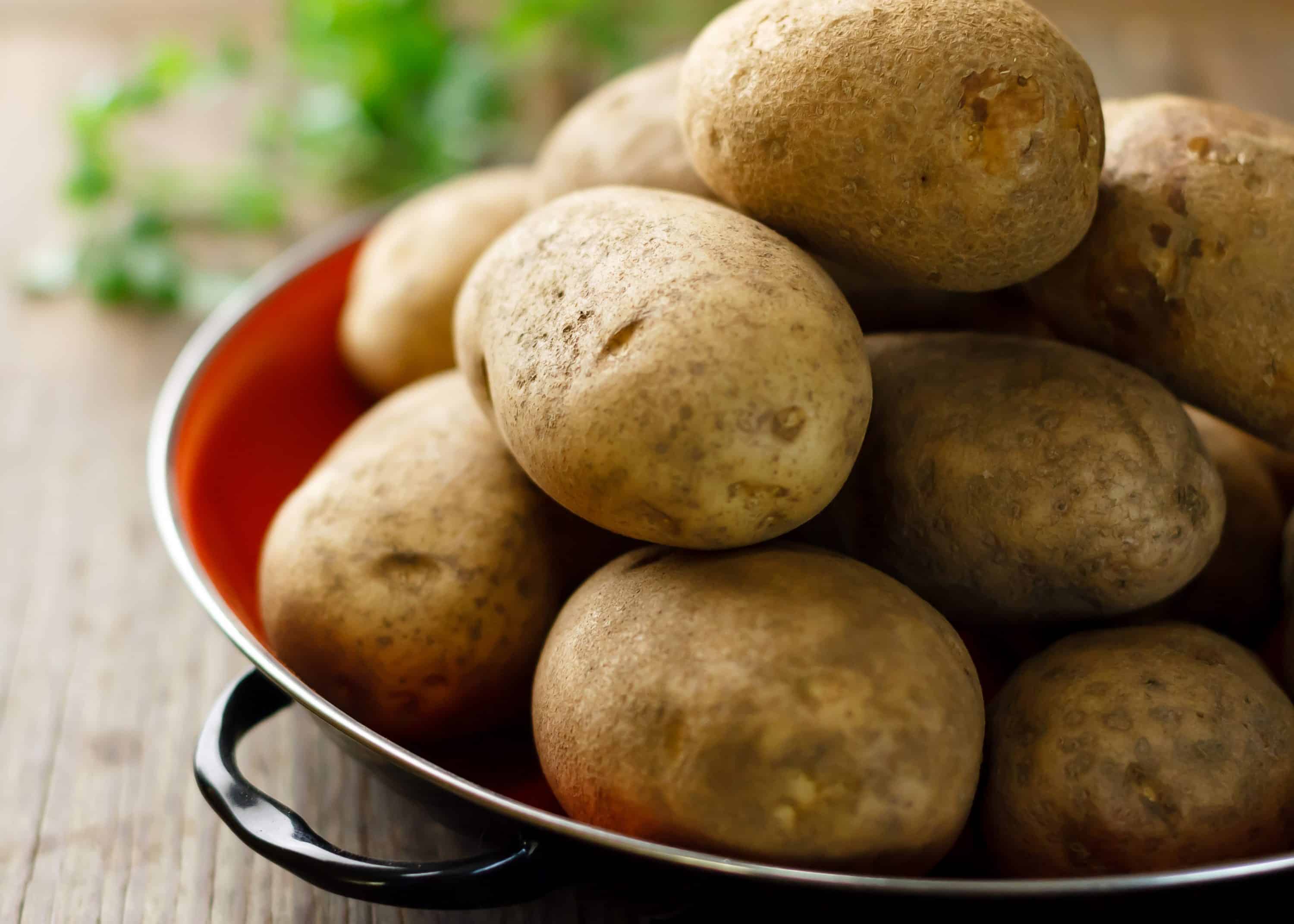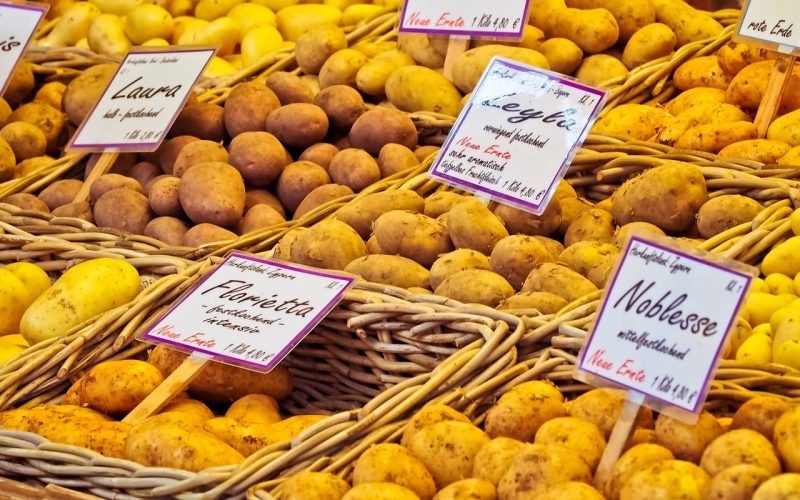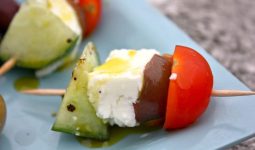This article discusses some of the different types of potatoes worldwide. Everything goes well with this starchy ingredient.
After all, a deli sandwich isn’t complete without a bag of chips, a burger without a side of fries, or a hearty stew without some potatoes.
We spend a lot of time with potatoes, so it’s a shame that we haven’t invested more time in getting to know them.
You inquire, “What is there to know?” Potato varieties have distinct flavors and textures (sweet, vegetal, nutty, starchy, waxy, moist, and floury).
These two characteristics ultimately determine how to use your tubers.
We spend a lot of time with potatoes, so it’s a shame that we haven’t invested more time in getting to know them.
You inquire, “What is there to know?” Potato varieties have distinct flavors and textures (sweet, vegetal, nutty, starchy, waxy, moist, and floury).
These two characteristics ultimately determine how to use your tubers.
Here is a comprehensive guide to some of the different types of potatoes.
1. Russet Potato

This widely available potato variety was created in Idaho in the 1870s as the Russet Burbank (via Idaho Potato). 90% of the 13 billion pounds of potatoes harvested in the state each year are currently russets.
The long, oval-shaped tuber typically ranges in size from medium to large, has rough brown skin, and an interior that is either white or pale yellow (via Potatoes USA).
The preferred variety for baked potatoes and French fries is the russet, which is very starchy.
Given their low moisture content, they are also among the best varieties of potatoes for mashed potatoes. They have a light, soft texture because they soak up a lot of liquid.
2. Yukon Gold Potato
Yukon Golds were created in Ontario, Canada, in the 1960s and 1970s (through the University of Nebraska-Lincoln).
It took some time for these potatoes with golden brown skin and yellow flesh to become well-liked, but today, over 1800 acres across the country are set aside each year specifically for this variety.
This versatile variety, which falls between a waxy and starchy potato, lends itself to roasting, frying, boiling, and sautéing, among other cooking techniques.
Yukon Golds don’t absorb much water, so they are less likely to become gummy, giving you creamy, dense mashed potatoes.
Also, these tubers are perfect for a German potato salad due to their ability to maintain their shape while cooking. Furthermore, Yukon Golds that have just been harvested are prized for roasting and sautéing.
Peel Yukon Gold potatoes and boil them in salted water for 20 to 25 minutes for our Spanish-style potatoes recipe.
Then, pan-fry the potatoes in olive oil with parsley and garlic until crispy.
Add butter and parsley to finish. Your potatoes will be flavorful, with a crunchy exterior and tender interior.
3. German Butterball Potato
German Butterballs are medium to large round potatoes with pale yellow skin and a golden waxy interior. They were first developed in Idaho in 1988 by David Ronniger.
These potatoes are creamy and tender with a buttery flavor, much like Yukon Golds.
Furthermore, they work well in virtually any recipe where Yukon Golds would typically be used, including steaming, baking, frying, mashing, etc.
Given their naturally rich flavor, they also make good roasting potatoes and don’t need much seasoning.
4. Japanese Sweet Potatoes
These purple-skinned potatoes have starchy, white flesh slightly sweeter than other sweet potato varieties. Their nuttiness pairs well with various savory dishes.
Additionally, they taste especially good when roasted or grilled whole.
5. Adirondack Red
The Cornell University-bred Adirondack Red potato variety has red skin, pink flesh that is lightly netted, and a fine, succulent texture.
The lovely red tubers are excellent when roasted, baked, sautéed, or added to salads because they largely remain spotless. Because of their high antioxidant content, they are a great addition to any diet.
Adirondack Red is unique in that it has high antioxidant levels and colored skin and flesh. This variety is described as early—to mid-season, medium—to high-yielding.
The golden cyst nematode and silver scurf disease can affect Adirondack Red potatoes. They are only slightly resistant to common scabs.
6. Bonnotte
The Bonnotte is a prized potato variety known for its delicate flavor and ability to be grown only in a particular area.
Like the soil on the Île de Noirmoutierand, the soil on the Isle of Jersey is fertilized by algae and sea salt buildup, giving it its distinct flavor. The soil is hand-picked for seven days in May.
Furthermore, despite their high cost, potatoes are highly sought after because of their scarcity and distinctive flavor.
7. All-Blue
Little-known facts about all-blue potatoes include that they were originally blue and had comparable antioxidant properties to kale and spinach.
All-blue potatoes have smooth skin and a deep blue color. They are smaller than other varieties of potatoes but have a flavor reminiscent of butter.
Furthermore, these gorgeous blue heirloom vegetables are a wonderful addition to any diet, so I strongly advise people to grow them.
Blue potatoes are healthy and delicious and can liven up and color your meal. They are ideal for roasting, mash-making, or boiling.
8. Almond Potato
Swedish fingerling potatoes come in the variety known as almond potatoes.
They are small and oblong, have a firm texture, have white flesh, and have thin skin. They work best when roasted, boiled, or pan-fried.
However, you can use the versatile ingredient almond potatoes in various recipes. Try them roasted with other vegetables or in a potato salad.
They are a wonderful complement to any meal. Almond potatoes are one of the different types of potatoes.
9. Anya Potato
Anya potatoes, one of the different types of potatoes, are renowned for their creamy texture and thin skin. They typically don’t have large sizes.
The Scottish Crop Research Institute has been growing Anya, a variety of potatoes. Lady Sainsbury inspired its name.
After Lady Sainsbury’s passing in 1885, Anya—a hybrid of Désirée and Pink Fir Apple—was given a name.
One variety of fingerling potatoes is the Anya, which has a long, knobbly oval shape, pinkish beige skin, and white waxy flesh. It is a superb boiling potato that you can prepare in several ways.
10. Bamberg Potato
The Franconian potato variety is called Bamberg. Its name is derived from the German town of Bamberg.
The Bamberg potato has a waxy texture and is a small, typically long, irregularly shaped potato. It tastes nutty and has firm, light yellow flesh.
It is a specialty of the area and a threat from southern Germany that the European Union protects. Due to the difficulty of planting and the low yield, it was almost extinct.
Furthermore, farmers rarely grow much of it for commercial purposes, but some grow it in gardens for domestic use.
The Bamberg can be purchased outside its origin in delicatessen shops, from specialized vendors, farmers’ markets, and organic grocery stores.
11. Bintje
The Bintje potato is a popular Dutch variety valued for its large, thick, oval shape and soft, fluffy texture.
This potato is notable for its creamy yellow flesh and similar skin tone.
12. Butte Potato
If you’re looking for a traditional Idaho baking potato, butte potatoes are a fantastic option. These are also resistant to late blight and scab disease.
They are russet, which refers to their rough, brown skin, and have 58 percent more vitamin C and 20 percent more protein than non-russet varieties.
However, if you’re looking for a delicious, healthy potato to bake, mash, or fry, butte potatoes are a great choice. They reach maturity in 110–135 days.
Butte potatoes are resistant to scab disease, late blight, and the nematode species Pratylenchus neglectus and Pratylenchus, penetrans that cause lesions.
13. Désirée Potatoes
Dutch breeders created the Desiree potato variety in 1962. It has a distinctive flavor, red skin, and yellow flesh. Due to its resistance to drought and relative disease resistance, it is a favorite among allotment owners.
It is useful for all types of cooking, from roasting to mashing and salads, and is fairly waxy and firm. Additionally, the Desiree potato has excellent resistance to PVY, late tuber blight, blackleg, and immunity to potato warts.
However, as a result, those looking for a tasty, disease-resistant potato should consider the Desiree potato.
14. Gala Potato
Gala potatoes are highly prized because of their superior eating and storing characteristics.
They are a sizeable, oval-shaped white potato variety with a firm texture and a color ranging from cream to light yellow.
It was selected as Thuringia’s potato of the year in 2010 and is still a consumer favorite.
This potato is distinguished by its early ripening, firm flesh, and excellent flavor.
Furthermore, it is best to boil, roast, or steam them. Germans are the original breeders of gala potatoes.
Gala is a fantastic choice if you’re looking for a satisfying and reliable potato.
15. Golden Wonder Potato
Famous Russet potato varieties include Golden Wonder potatoes. They have a great, creamy-colored, light-skinned potato shape that ranges from oval to oblong.
Because they are fluffy and soft, potatoes are ideal for roasting, making chips or fries, or mashing.
Scottish-born potatoes called “Golden Wonder” have gained popularity among many home cooks.
16. Home Guard Potato
The white variety of potatoes known as the Home Guard is one of the different types from the UK.
These potatoes are small to medium in size, oblong to round in shape, and have thin beige skin and white flesh.
Also, you can use them in soups, stews, boiled, steamed, and pan-fried dishes.
The firm texture of Home Guard potatoes is well-known. They retain their shape well and taste creamy when cooked.
17. Irish Lumper
Since the middle of the nineteenth century, Irish farmers have been cultivating the potato variety known as Irish Lumper.
These medium-firm, waxy potatoes are perfect for a variety of cooking applications. They have lumpy skin, white flesh, and light yellow coloring.
Furthermore, the Irish Lumper is a versatile potato that is great for mashed, roasted, boiled, and more.
18. Jersey Royal
The history of the Jersey Royal potato dates back to the 19th century. Hugh de la Haye planted the first potatoes in Jersey in 1886.
Jersey Island inspired the name of the new potato, which quickly gained popularity among island visitors.
Furthermore, the Jersey Royal potato, one of the most well-liked vegetables in the UK, is now a significant contributor to the island’s economy.
Over 1,000 hectares of land in Jersey are used to grow potatoes, which are then exported to other nations.
19. Kennebec Potato
The versatile variety of Kennebec potatoes can be used in various recipes.
They have a medium-firm texture and a mildly nutty flavor. The potatoes are oblong or round in shape and medium in size.
Kennebec potatoes were developed in the early 20th century and are still widely used today. They can be boiled, roasted, mashed, or used in soups and stews.
Furthermore, they are an adaptable variety that goes well with any dish.
American-born Kennebec potatoes are still well-liked by those who enjoy potatoes.
20. Vitelotte
The Vitelotte potato is one of the rarest types of potato, with violet-blue flesh, dark blue skin, and a distinctive chestnut-like flavor and aroma.
The anthocyanin group of flavonoids, which are natural pigments, gives the Vitelotte potato its distinctive color. The color is kept after cooking.
France is the original home of the Vitelotte potato, which has been grown there since the early nineteenth century.
You first mentioned these potatoes in a source from 1817, when both Vitelotte and Violette were listed as available potato varieties at the Les Halles market (“violet”).
Furthermore, the plants take longer to mature and yield less than modern varieties. The elongated, sunken-eyed tubers have thick skin that helps them keep well.
21. King Edwards Potato
Various potatoes known as King Edward have been grown in the UK since 1902. They have pink highlights, and their skin is mostly white. Their texture is floury, and their eyes are small.
The plant is upright and broad, with numerous stems and tiny green leaves. Its flowers have purple petals with white tips.
This potato cultivar’s debut coincided with King Edward VII’s coronation in 1902, and the word “commemoration” has been associated with it.
According to rumors, the grower wrote to Buckingham Palace to ask permission to name his potato after the king, and he reportedly received a positive response.
People often use King Edward potatoes for roasting, mashing, and baking. They also work well for chips and french fries. They have a fluffy, light texture and a mildly sweet flavor when cooked.
Despite being one of the oldest cultivars, the King Edward potato is not a common crop in the UK. However, it continues to be well-liked in other regions of Europe and is exported to other nations.
22. Marcy Potato
Cornell University developed a late-maturing white potato variety called Marcy in 1990. Its size, shape, and consistent color make it a good chip option.
It has a long shelf life; even after only brief to intermediate storage, the color of the chips does not deteriorate. Also, the Marcy potato has a high yield and good common scab resistance.
23. Maris Piper
The Maris Piper variety is one of the most common potato varieties in the UK. The spring and summer seasons are typically when Maris Piper potatoes are grown.
Depending on the area, they can be harvested anywhere from late June to early October. This variety can be used for mashed potatoes, roast potatoes, and chips, among other things.
It was developed in 1966 and is resistant to the potato cyst nematode strain, a significant pest of potatoes grown in the UK.
24. Nicola Potatoes
A white potato variety originally from Germany, Nicola potatoes were named Germany’s potato of the year in 2016.
They are long, oval to oblong, and have a firm texture. The skin and flesh are both a creamy yellow color. Nicola potatoes are versatile and can be used in various recipes, such as boiling, mashed, and roasted.
25. Ozette Potato
The potatoes known as “Ozette, one of the different types of potatoes, date back hundreds of years and were found in Washington, USA.
They are distinguished by their unusual shape and numerous lumpy bumps.
It is a fingerling vegetable with a wavy shape and numerous bumps, but it tastes nutty and delicious.
Ozette potatoes are delicious and adaptable. They work well in baked, mashed, roasted, or pan-fried dishes.
Despite their waxy texture, they are regarded as all-arounders due to their adaptability.
26. Pink Fir Apple Potato
Some consumers enjoy apple potatoes’ distinctive, knobby texture, while others detest it. These potatoes are typically more expensive than the Yellow Finn variety and are renowned for their rich, nutty flavor. Although they are challenging to peel, their creamy, waxy flesh is worth the trouble.
Furthermore, The Anya potato was created by crossing it with the Désirée variety after it was first brought to the United Kingdom from France in 1850.
27. Ratte Potato
Small potatoes with a nutty flavor, known as “ratte potatoes,” are preferred by French chefs. Golden yellow flesh and a buttery, smooth texture make up this fruit.
This potato is typically harvested by hand and is well-known for its excellent texture and flavor. Due to its hand harvesting and low yield, this cultivar commands a high price.
Ratte potatoes can be roughly mashed and are frequently used in salads or casseroles. According to legend, the type of French soil farmers use to grow the Ratte potato gives it its nutty flavor.
Furthermore, the Ratte potato is a great option if you want a distinctive and flavorful potato that is frequently used in salads or casseroles and can be roughly mashed.
28. Red Pontiac
A red-skinned potato with white flesh is a red Pontiac potato. These medium-sized potatoes have thin and smooth skin. Canada began growing this crop in the 1940s, and they are now well-liked in Canada and the US.
Furthermore, they are suitable for boiling, baking, and mashed potatoes because they mature quickly and are harvested earlier than other different types of potatoes.
29. Rooster Potato
Rooster potatoes are a cultivar of potatoes that lends itself well to roasting, baking, and making chips. They have soft yellow flesh and a rich, earthy flavor.
In 2004, 38% of all potatoes produced in the Republic of Ireland were “Rooster” potatoes. At the Teagasc Oak Park Research Center in Carlow, Ireland, by Harry Kehoe. This is one of the different types of potatoes.
30. Laura Potato
Red-skinned potatoes are a recent variety, and the Laura potato has only been grown since 1998. Because it is versatile, it can be used in various applications.
One of the different types of potato, the Laura potato, has a firm texture, one of its best qualities. Therefore, it can be boiled, mashed, and fried with ease.
The potato’s lovely appearance makes it ideal for presentations due to its deep red skin and rich yellow flesh.
The Laura potato is a wonderful choice for both soups and stews. Its firm texture holds up well when cooked for a long time, and the flavor is light enough not to overpower other ingredients.
31. Shetland Black potato
The Shetland Islands are home to the dark purple and black potato, a Victorian-era creation of the United Kingdom’s Ark of Taste.
The plant can be grown in a container because of its shallow roots and height of about 2.5 feet.
It is smaller than most contemporary potatoes, slices with a purple ring near the edge, and, when cooked, has a fluffy texture. It has thick, uneven, dark purple skin.
Furthermore, the potato is tasty when roasted, baked, steamed, or fried into chips or crisps.
32. Sweet Potato
Among the root vegetables, sweet potatoes are tuberous. They typically have an earthy, sweet flavor and are orange or yellow.
Although they are two different vegetables, sweet potatoes, and yams are sometimes used interchangeably.
Yams are starchy root vegetables from Africa and Asia, while sweet potatoes are members of the Morning Glory family.
Sweet potatoes contain good dietary fiber, vitamin A, and vitamin C. They can be prepared in various ways, such as roasting, frying, and baking.
33. Vivaldi Potato
HZPC created a cultivar of Dutch potato named Vivaldi and later sold it to “Naturally Best” in Lincolnshire, England.
The potatoes are grown in Great Britain and other nations, allowing for year-round availability, so the name was chosen as a major tribute to Antonio Vivaldi.
Its mild sweetness and soft, velvet-like texture make it the perfect complement to mashed or boiled potatoes that maintain their shape.
Additionally, it is a smart choice for people trying to lose weight because it contains fewer calories and carbs than other popular potato varieties.








